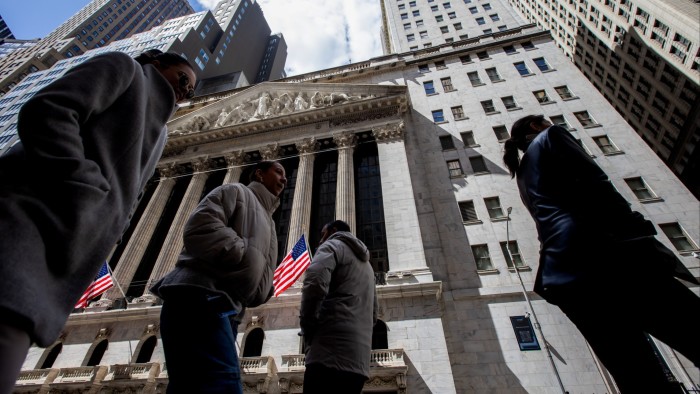Unlock the Editor’s Digest for free
Roula Khalaf, Editor of the FT, selects her favourite stories in this weekly newsletter.
The writer is a bond portfolio manager at Barksdale Investment Management and editor of ‘The Credit Investor’s Handbook’
The junk bond market has roared back to life, making May the busiest high-yield bond issuance month in the year to date. It was hard to catch a breath from one new issue to the next. This good news for credit investors has a downside — we have to go back to worrying about liability management exercises.
LMEs are debt restructurings where one creditor can usurp another. One creditor might have bought the bonds of a leveraged issuer or part of a loan to one on the basis of the deal’s collateral and/or structural protection in its covenants. But then the debt is restructured, often with new funds raised and another creditor moving up the priority queue to be repaid. The original creditor can often only stand by helplessly as their status is yanked away from them.
It has been dubbed “creditor-on-creditor violence” and it is spreading as a trend. According to Barclays, distressed debt exchanges — a functionally similar cousin of LMEs — have accounted for more than 40 per cent of corporate defaults over the past decade. In recent years, there have been LMEs at companies such as J Crew, Serta Simmons and Neiman Marcus. “When company names become verbs — J Screwed, Serta’d — you know a trend is afoot,” notes Michael Gatto, a partner at Silver Point Capital and author of ‘The Credit Investor’s Handbook’.
There have been some moves to instil greater protection for creditors in debt agreements, notably in a high-yield $1.65bn bond deal from marketing and printing company RR Donnelley last year, which featured covenants that would make it difficult for future debt deals to favour some creditors at the expense of others.
But the recent flood of junk bond issuance hasn’t normalised an “RR Donnelley clause” or similar protections. Creditors all too often give away structural protections for a bit of extra coupon. And as the high-yield bond and syndicated markets shrink due to competition from direct lenders, the credit world continues to be a seller’s market — meaning the porous docs that facilitate LMEs are a feature, not a bug, of the process.
If you spent the time required to pore over the documentation of an issue, you’d probably find the smoking gun clauses that, say, permitted the company to move its intellectual property out of creditors’ reach. But with new issues coming at a rapid clip, who has that kind of time? The answer: investment firms with special situations groups, formerly known by the less marketing-friendly moniker of distressed debt investors. As one specialist wryly told me, the term is frequently misapplied to investors rather than the debt they’re buying.
Increasingly, the leveraged finance companies are bifurcated between those that have specialist teams that exploit poorly drafted credit agreements and the have-nots. The latter group does traditional credit analysis but often lacks enough resources to identify sloppy documentation.
The weakening of documentation also partially results from a quirk of the structure of investment vehicles known as collateralised loan obligations that have expanded greatly in recent years. Roughly two-thirds of broadly syndicated loans are purchased at origination by CLOs, according to JPMorgan research.
A typical CLO is tranched into slices of differing risk. JPMorgan estimates those rated AAA by credit rating agencies make up 60 per cent or more of the average deal — meaning that the buyers of that portion of the CLO are taking investment-grade risk. Other tranches are rated higher in risk. It’s an oversimplification to say that most junk-rated loans are held by AAA investors — yet that is the end result.
While CLO managers employ credit analysts, most rarely have the time or expertise to do the deep dive into documentation that a special situation group undertakes. That doesn’t matter if the issuer performs as expected — but when things go south, the focus shifts. A truism is that good docs can’t make a bad credit deal good — but bad docs can make a bad deal horrible.
Managers at larger companies with special situation groups have advantages, not only in the capacity to evaluate the docs. The special situation teams can clue in managers when an issue is getting, ahem, interesting, and allow them to sell early. And if a special situation group is involved in an LME, any overlapping position held through a CLO will probably be brought along on any deals.
The saying in fixed income used to be, “You can’t get fired for investing with Pimco”. Today, it is becoming similar with more specialised credit managers. Large credit platforms will continue to get bigger as their analytical resources give them a leg up.
https://www.ft.com/content/b5693e95-3a89-4df0-a1f8-ad3e70338458


